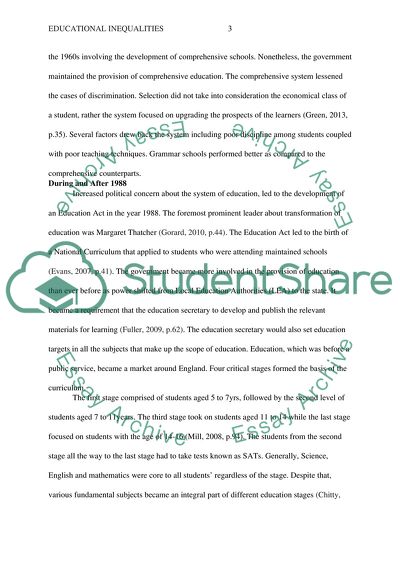Cite this document
(Educational Inequalities in the UK Case Study Example | Topics and Well Written Essays - 1750 words, n.d.)
Educational Inequalities in the UK Case Study Example | Topics and Well Written Essays - 1750 words. https://studentshare.org/education/1872460-educational-inequalities-the-focus-of-education-policy-in-england-since-1988-has-been-on-outcomes-at-the-expense-of-equality-discuss
Educational Inequalities in the UK Case Study Example | Topics and Well Written Essays - 1750 words. https://studentshare.org/education/1872460-educational-inequalities-the-focus-of-education-policy-in-england-since-1988-has-been-on-outcomes-at-the-expense-of-equality-discuss
(Educational Inequalities in the UK Case Study Example | Topics and Well Written Essays - 1750 Words)
Educational Inequalities in the UK Case Study Example | Topics and Well Written Essays - 1750 Words. https://studentshare.org/education/1872460-educational-inequalities-the-focus-of-education-policy-in-england-since-1988-has-been-on-outcomes-at-the-expense-of-equality-discuss.
Educational Inequalities in the UK Case Study Example | Topics and Well Written Essays - 1750 Words. https://studentshare.org/education/1872460-educational-inequalities-the-focus-of-education-policy-in-england-since-1988-has-been-on-outcomes-at-the-expense-of-equality-discuss.
“Educational Inequalities in the UK Case Study Example | Topics and Well Written Essays - 1750 Words”. https://studentshare.org/education/1872460-educational-inequalities-the-focus-of-education-policy-in-england-since-1988-has-been-on-outcomes-at-the-expense-of-equality-discuss.


